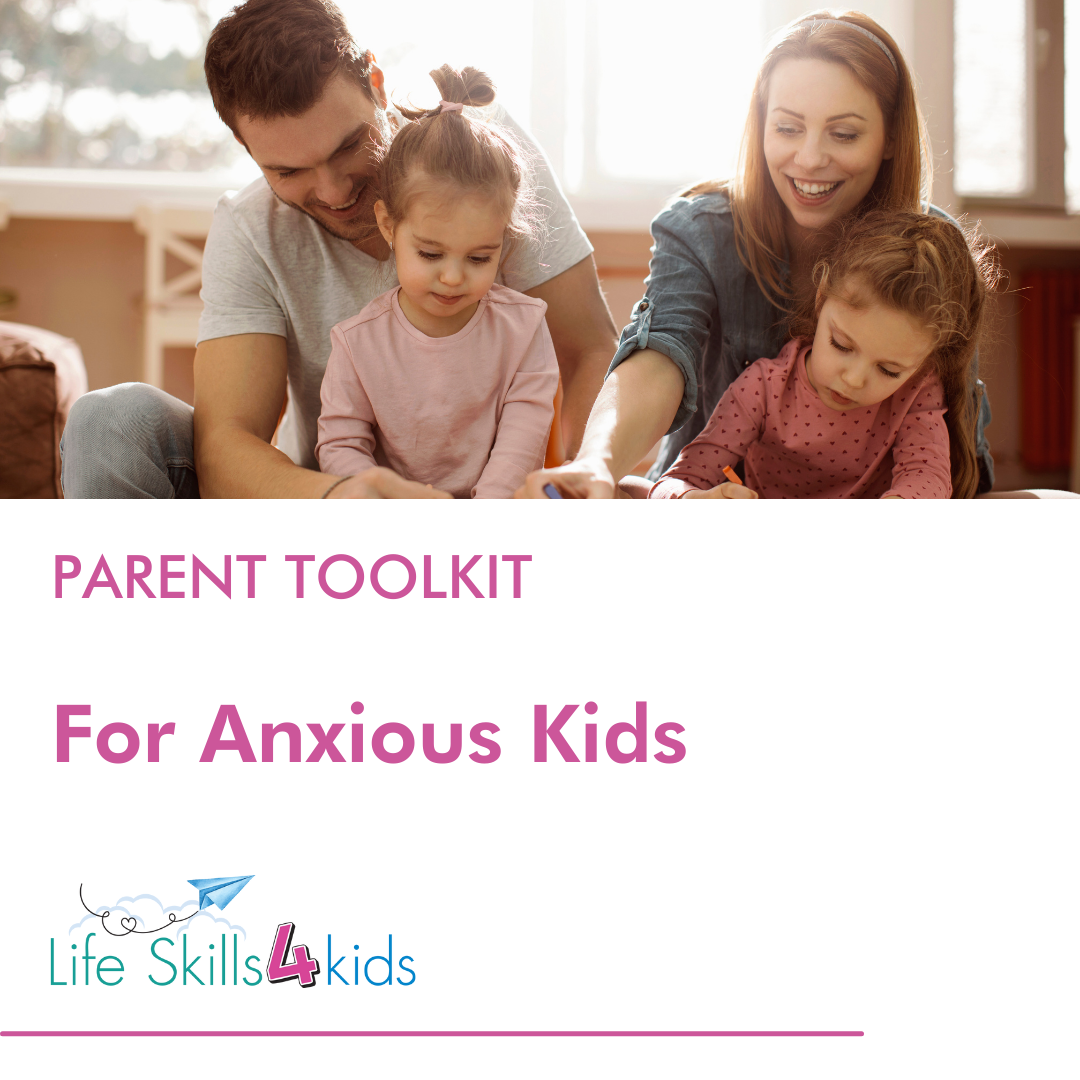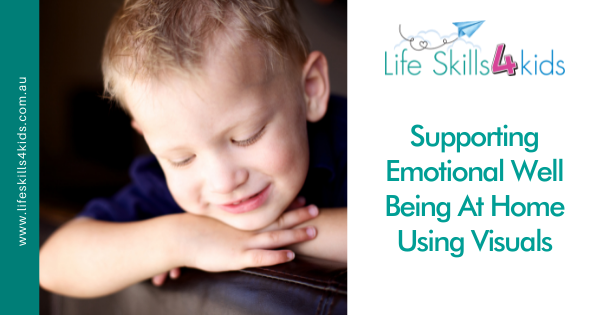Do you struggle in supporting emotional well being at home for your ASD child?
As parents, we all want our kids to be happy, well adjusted and enjoying life.
Kids with ASD respond to using visuals to understand routines, transitions and expectations of them. In the school environment, ASD kids are likely to find themselves able to make more sense of their world when they use visual timetables and visual cues.
At home, we can take a leaf out of the school book and use similar visuals to help our ASD child thrive in the home environment too.
ASD kids struggle with understanding:
- How they feel
- How others feel
- How to interpret the signals of how others feel
Let’s take a look at how visuals can help us take a massive step towards supporting emotional well being at home.
Supporting Emotional Well Being At Home
1. School Strategies which can help you
- Ask for help from your child’s teacher to find out what visuals are used in the classroom.
- Your child will have a team of professionals to support them at school. You can discuss with them which visual programs are being used.
- Examples include: Boardmaker pictures, communication boards, visual timetable symbols, social stories.
- It will really help your ASD child if they have consistency with the same visuals being used at home and at school.
- Also check whether the school uses black & white or colour visuals with your child – again consistency is the key.
- If you have any home support for your child, for example, a speech therapist, they will be delighted to set up and show you how to use visuals to their fullest potential.
Using Visuals At Home
Here are some examples of strategies which are available for you to use at home.
1. Emotions thermometer
- An image of a thermometer can be a useful tool to encourage a child to “measure” their emotions.
- A low temperature means your child is happy. As it gets higher, then your child is becoming more anxious and unhappy.
2. Fast, slow, just right visual model, eg, SticKids
- Stickids provides a system of planners and pictures to make a visual timetable for your child.
- The program includes frameworks for supporting emotional well being at home.
- More information is available at SticKids.
5. High, just right, low visual model, eg The Alert Program
- The Alert Program uses this quote: “If your body is like a car engine, sometimes it runs on high, sometimes it runs on low, and sometimes it runs just right!”
- This program focuses on what sort of emotional state your child is in.
6. Zones of regulation program
- Zones of regulation is a framework to support emotional well being.
- There are four zones:
- Red is very upset eg terror, rage, anger
- Yellow is upset eg anxiety, frustration
- Green is calm, where emotional well being is good.
- Blue is low eg sad, sick, tired
7. Just Right Kids Model which combines fast, slow, just right
- The Just Right Kids Technique has been developed through over 17 years of experience.
- It takes the best bits from some of the above examples and combines them.
- Just Right Kids provides a way for you and your child to learn about their emotional well being.
How Can The Just Right Kids Technique Help You & Your Family?
We all want our family life to be happy, relaxed and working well as a team. It can be a struggle for kids at both school and home to feel like they are OK and coping with the daily demands of life.
In supporting emotional well being at home, we allow our kids to thrive in a world that they would otherwise struggle to understand.
It is important for an ASD kid to have a framework around which they can work out their emotions and deal with them with success.
What Is the Just Right Kids Technique?
Just Right Kids has six areas to understand. Once children get to grips with these six, you can use the Just Right Kids Technique to practice with them to manage their emotions. In time, this will help lessen meltdowns and tantrums.
The Six Areas of Just Right Kids
1. When my body is going fast
- Our bodies are going fast when we are excited, happy, have lots of energy.
- This can cause a level of alertness that is too high to sit down (and this may cause us to get into trouble!)
- Our thinking can be unclear and it is difficult to concentrate.
2. When my body is going tired / slow
- We might find it hard to get up in the morning.
- We might be lethargic and going too slow all day.
- We can be under responsive and perceived as being “lazy”.
3. When my body is angry
- I feel stressed out and on high alert.
- I can’t control my body, I am reacting to an event and might feel hard done by.
4. When my body is in meltdown or tantrum mode
- I am in overwhelm and my senses are frazzled.
- I might be in the meltdown zone.
- I might be in the tantrum zone and I’m trying to take back some control.
- This zone could quickly disintegrate into the sad or angry zone.
5. When my body is sad / slow
- I feel sad, curl up or have a cry.
- I might be recovering from a meltdown.
- I might be tired or sad.
6. When I am a ‘just right’ kid
- When I am feeling ‘just right’ I feel safe, happy and emotionally okay.
- I have the right attitude to life.
- I can concentrate, listen and understand what is happening around me.
The goal of the Just Right Kids Technique is that your child is just right for most of the time.
When you are supporting emotional well being at home, remember to find out what visual strategies school are using and use them to help your ASD kid at home too.
Remember also, that it can take time and patience to put successful strategies in place, keep in mind the long-term goal of having all of your family (including you!) in a good place.
Parent Toolbox for Anxious Kids – Webinar Series
Help your child with anxiety with practical tools for success and becoming more independent in what they need to do by reducing and managing their anxiety.
The Toolbox includes the following recorded workshops:
– Supporting children to communicate how they are feeling when they are anxious.
– Helping your child with learning anxiety.
– Helping your child decrease anxiety caused by sensory processing issues.
– How to help your child manage their social anxiety.


